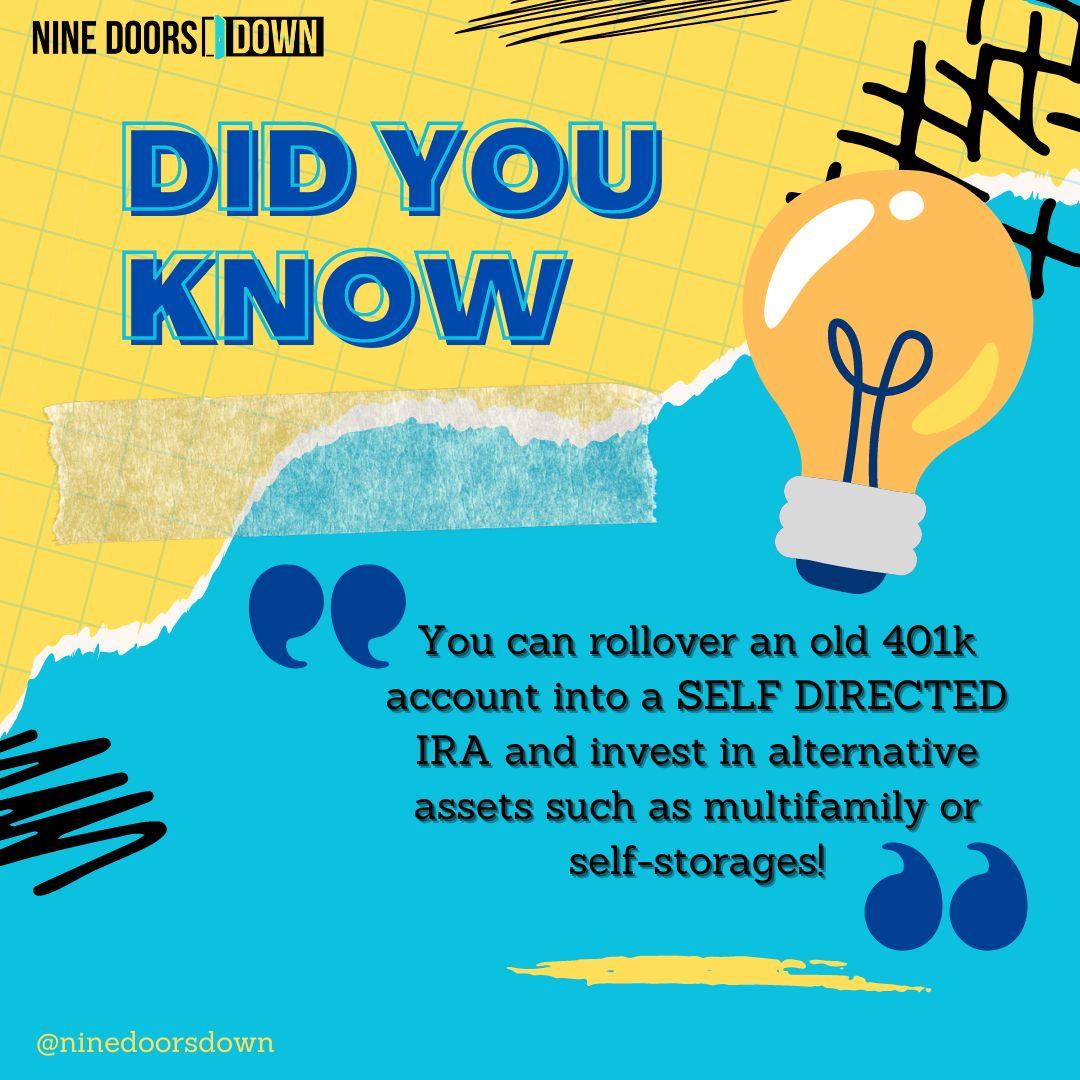Significant financial changes can result from losing a job, changing jobs, or beginning your own business. It also offers a chance to take charge of your retirement resources and investigate other investing options.
Using your former 401(k) as leverage to open a self-directed Individual Retirement Account (IRA) that enables passive investment in commercial real estate is one such option. In this post, we’ll look at how to realize this potential and create a balanced retirement portfolio.
Step 1: Recognize a Self-Directed IRA’s Potential
A self-directed IRA gives you the power to manage your retirement savings by providing more asset options than just the standard equities, bonds, and mutual funds. The ability to invest in real estate, including commercial properties, through the creation of a self-directed IRA allows you to diversify your portfolio and potentially generate substantial returns.
Step 2: Transfer Your Old 401(k) to a Self-Directed IRA
You’ll need to start by moving money from your existing 401(k) into a self-directed IRA. This procedure, known as a rollover, can normally be started by getting in touch with your old 401(k) provider or your new employer’s retirement plan administrator. Choose a trustworthy custodian with experience managing self-directed IRAs; they will assist with the rollover and direct you through the investment process.
Step 3: Consider Your Investment Options
A self-directed IRA gives you access to a wide range of investment opportunities, with commercial real estate standing out as one of the most alluring options. Conduct in-depth research, seek professional guidance as needed, and evaluate potential commercial real estate options. Take into account elements including location, property type (office buildings, retail spaces, etc.), prospective cash flow, and the level of management experience needed for the venture.
Step 4: Find Knowledgeable Professionals to Collaborate With
Considerations like property selection, due diligence, finance, and property management are involved in commercial real estate investments. Engage the assistance of experts such as real estate brokers, attorneys, and property managers. Your ability to make wise financial selections and reduce risks will be aided by their expertise.
Step 5: Conduct Due Diligence and Mitigate Risks
Perform extensive due diligence on any potential commercial real estate venture before investing. Consider aspects like the state of the property, prospective rental income, active leases, market demand, and any legal or regulatory requirements. Develop a plan to properly manage the investment’s risks after evaluating the dangers.
Step 6: Manage Your Investment and Reap the Rewards
Once you’ve identified a suitable commercial real estate opportunity, use your self-directed IRA to fund the investment. Remember that all income and expenses related to the investment must flow through your IRA. Regularly monitor your investment’s performance, stay informed about market trends, and make adjustments as necessary. Over time, rental income, property appreciation, and tax advantages associated with your self-directed IRA can contribute to the growth of your retirement savings.
Conclusion: Be Excited Because You Have Options!
A turning point in your financial career can include leaving behind a job you no longer have, finding a new job, or beginning your own business. You can take advantage of passive investment opportunities in commercial real estate by using your old 401(k) through a self-directed IRA. Take the appropriate actions to investigate this opportunity, including rolling over your 401(k), looking into investing possibilities, working with experts, and performing due diligence. Building a diverse retirement portfolio and securing your financial future can be accomplished with careful preparation and well-informed decision-making.








